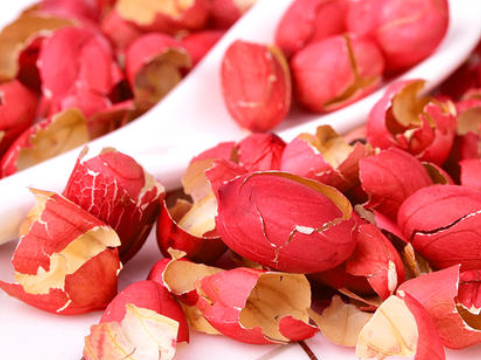Make Good Use of Peanut Red Skin
Modern medical research has shown that peanut red skin contains vitamin K, a hemostatic effective ingredient, and resveratrol, an effective preventive agent for cardiovascular disease. Vitamin K is necessary for the body to maintain normal blood coagulation. It has functions such as anti-fibrinolysis, promoting bone marrow production of platelets and shortening bleeding time, strengthening capillary contraction, and adjusting blood clotting factor defects. The lack of vitamin K can lead to delayed blood clotting. The content of resveratrol in peanut red skin is 2 570 ug /100 g, which has been listed as one of the “100 most popular and effective anti-aging substances”. Resveratrol can effectively inhibit the abnormal aggregation of platelets, thereby preventing the occurrence of myocardial infarction and cerebral embolism. In addition, resveratrol also protects the hypoxic heart, prevents atherosclerosis, dilates blood vessels, and improves microcirculation.


Peanut red skin accounts for 1.5% to 3% of the quality of the peanut. At present, whether peanut is used for oil extraction or processing peanut products such as peanut butters, the vast majority of red skin has not been developed and utilized. A lot of peanut red skin is accompanied by peanut cakes. Most are used as feed or discarded, causing waste of resources. If this active substance in peanut red skin is extracted to produce foods with increased blood quality, it will not only improve the economic benefits of peanuts, but also bring benefits to people’s health. What is more, peanut red skin can also be used to make peanut pigment. The product can be used for food coloring, and has obvious antioxidant effects, which is conducive to the preservation of food.
In peanut butter production line and other peanut food processing production, red skin can be removed and collected by peanut peeling machine, they can be further processed to be used in many area such as medicine industry and food industry.